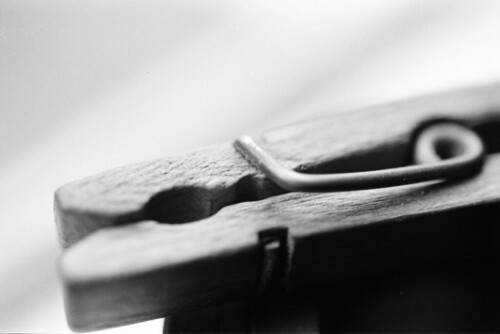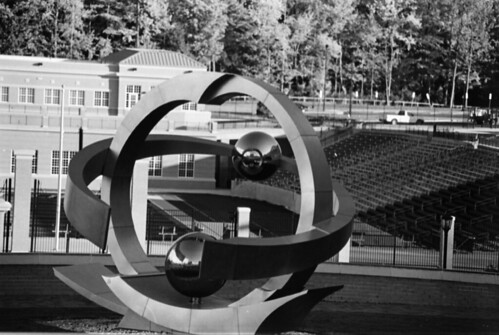I have been working with film photography off and on for about 2 years now, since about March 2010. I have used a variety of films and chemicals since the beginning. I am now slowly learning what everything I have been working with does and how each element impacts the outcome of the final image.
One of the things I have learned most recently is that contrary to the film to digital sensor analogy, noise/grain in images are not entirely the responsibility of the film. It seems that a fine grain film is only as good as the developer it is used with. I was wondering why different film I was processing had similar attributes, apparently it is a result of the developer. Processing Neopan 400 and processing HP5+ should not look very similar, each have their own characteristics, but yet some of the flaws I was running into with one was also occurring with the other.
I began processing film with a very basic developer that I acquired from Adorama. That was ok for the first roll or two, but I quickly learned that it was much too harsh and didn’t work as well as I would like for making images that could be preserved as components of my artistic portfolio. I then moved to Kodak’s D-76 at the suggestion and urging of many film photographers. I am somewhat happy with the results from D76. It is efficient and produces a moderate size grain on the negative. The problem comes with my needs for enlargement and high-resolution digital storage of the image. D76 is not fine enough for what I’m looking for as I’m often disappointed with the way that my images come out when I look at them at full size. After much reading I have decided to try Ilford’s ID-11. I was tempted to try Perceptol, but it seems a little excessive, being described as a “very fine” grain developer that can easily push process up to 2 steps on all film or 4 steps on Ilford film. Perceptol is an expensive developer which is described in a way that makes it seem overkill for my needs. ID-11 on the other hand seems like it will be a perfect match for Delta 400 as well as HP5+.
As for film, I have used several different film: Fujifilm Neopan 400, Ilford HP5+, Kodak Tri-X 125 (ISO 125 film) and now Ilford Delta 400. Each film has different characteristics. Neopan has fairly even toning, but doesn’t seem to reach true white or true black unless processing is either pushed or pulled. Neopan also suffers from large grain which makes the image itself less sharp than it should be given the speed at which they have been shot. The handling of the range is not always that good either as it sometimes seems more sensitive to light spots than to the dark. HP5+ seems to have the opposite problem, it is usually better at handling darks than lights. An interesting thing I have noticed about HP5+ is that its grain is somewhat more pronounced than that of Neopan 400, but yet the grain is less distracting and does not seem to distort the image the way that Neopan does. I also feel like the tonal handling of HP5+ is a little flat. Exposures come out pretty even, but it is almost too balanced, there is a lot of grey and not much black or white. Ilford Delta 400 I have only processed one roll of and I am not really sure what I think of it yet. My first impression is that it does not favor the grey region as much as HP5+ does, nor does it have a favoring of bright spots like Neopan 400. Delta 400 uses black and white pretty uniformly and there are clear white and black regions of the film. Delta 400 also has a very clean grain. It looks almost silky in appearance and seems to handle most things pretty well, including macro photography (which seems to come out badly on most other film).


